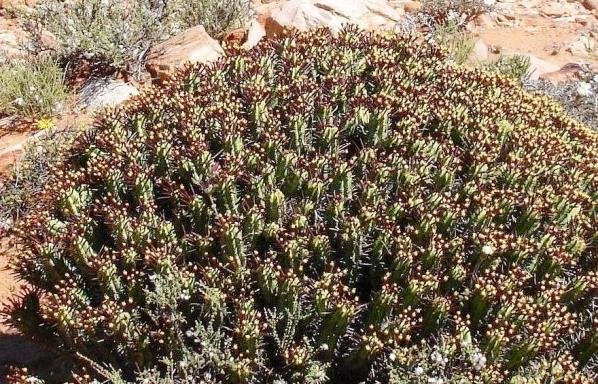Euphorbia enopla

Euphorbia enopla or the pincushion euphorbia is an attractive succulent from the dry regions of the Western Cape. It has become a popular gardening subject.
The branches are thick, green, ribbed columns with long red spines occurring in vertical rows along the rib edges. The male and female cyathia (flowers) appear on separate plants at the end of the peduncles at the top of the stems and resembling the other spikes on the plant.

